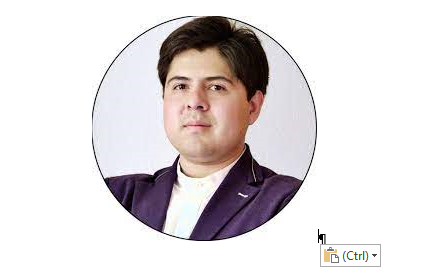Intervention de BAUTISTA Esteban jeudi 10 février

Esteban Bautista (post-doctoral researcher at LIP6 – Sorbonne Université) nous présentera ses travaux :
Titre : A frequency-structure decomposition for link streams
Résumé : A link stream is a set of triplets (t, u, v) modeling interactions over time, such as person u calling v at time t, or bank account u transferring to v at time t. Effectively analyzing link streams is thus key for numerous applications. In practice, it is common to study link streams as a collection of time series or as a sequence of graphs, allowing to use time filters and graph filters to process the time and structural dimensions, respectively. However, time and structure are nested in link streams, meaning that time-domain operations can affect structure, and vice-versa. This calls for a frequency-structure representation that allows to characterize processing operations in both frequency and structure. Yet, it is hard to combine existing signal and graph decompositions as they do not interact well.
To address this limitation, this work proposes a novel frequency-structure decomposition for link streams. Our decomposition allows us to analyze time via existing signal decompositions (Fourier, Wavelets, etc) and to analyze structure via a novel decomposition for graphs that is tailor-made to interact well with signal decompositions. This novel graph decomposition operates by partitioning the edge-space of graphs into regions and measuring the activity of regions, resulting in a set of coefficients that have several interesting properties to characterize the structural properties of graphs and that can be used to compare them. We show that the combination of our graph decomposition with signal decompositions leads to a set of coefficients that effectively encode the dynamical and structural properties of link streams in a simple matrix format. Then, we show that the properties of our decomposition make it easy to define time and graph filters in the frequency-structure domain and finish by showing how we can use filters to recover the backbone of a link stream.
- kc_data:
- a:8:{i:0;s:0:"";s:4:"mode";s:0:"";s:3:"css";s:0:"";s:9:"max_width";s:0:"";s:7:"classes";s:0:"";s:9:"thumbnail";s:0:"";s:9:"collapsed";s:0:"";s:9:"optimized";s:0:"";}
- kc_raw_content:
Esteban Bautista (post-doctoral researcher at LIP6 - Sorbonne Université) nous présentera ses travaux :
Titre : A frequency-structure decomposition for link streams
Résumé : A link stream is a set of triplets (t, u, v) modeling interactions over time, such as person u calling v at time t, or bank account u transferring to v at time t. Effectively analyzing link streams is thus key for numerous applications. In practice, it is common to study link streams as a collection of time series or as a sequence of graphs, allowing to use time filters and graph filters to process the time and structural dimensions, respectively. However, time and structure are nested in link streams, meaning that time-domain operations can affect structure, and vice-versa. This calls for a frequency-structure representation that allows to characterize processing operations in both frequency and structure. Yet, it is hard to combine existing signal and graph decompositions as they do not interact well.
To address this limitation, this work proposes a novel frequency-structure decomposition for link streams. Our decomposition allows us to analyze time via existing signal decompositions (Fourier, Wavelets, etc) and to analyze structure via a novel decomposition for graphs that is tailor-made to interact well with signal decompositions. This novel graph decomposition operates by partitioning the edge-space of graphs into regions and measuring the activity of regions, resulting in a set of coefficients that have several interesting properties to characterize the structural properties of graphs and that can be used to compare them. We show that the combination of our graph decomposition with signal decompositions leads to a set of coefficients that effectively encode the dynamical and structural properties of link streams in a simple matrix format. Then, we show that the properties of our decomposition make it easy to define time and graph filters in the frequency-structure domain and finish by showing how we can use filters to recover the backbone of a link stream.
Biography: Esteban Bautista is currently a postdoctoral researcher at the Complex Network’s team from Sorbonne Université working on the generalization of graph theory and signal processing to study temporal networks. Previously, he obtained the PhD degree in Computer Science at ENS de Lyon where he extensively worked on graph-based machine learning.- entete_extrait:
- lien_externe:
